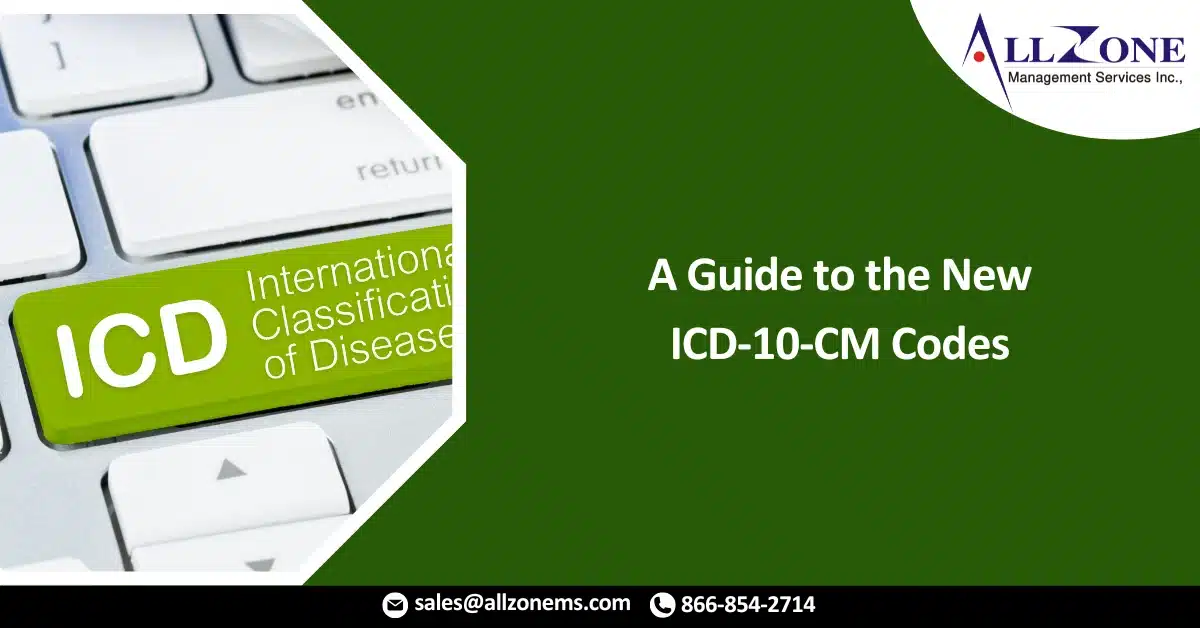2024 ICD 10 CM codes : The volatility brought about by the COVID pandemic has gradually transitioned towards a semblance of stability in the coding landscape. Particularly noteworthy is CMS’s unexpected revelation of the smallest count of codes in recent times. A sum of 395 new billable codes has been incorporated for the year 2024, accompanied by 25 removals and 13 modifications.
Highlights from the new 2024 ICD 10 CM codes :
ICD-10 Codes for Morbidity-Related External Factors.
Both children and adults have a tendency to express themselves in unexpected ways, don’t they? Interestingly, CMS seems to share this sentiment! The most significant overhaul within this year’s coding revisions places us squarely in Chapter 20 – External Causes of Morbidity (V00-Y99), accounting for nearly half of the new codes introduced this year.
Releated Article:
|
Whether it involves a child’s curiosity about fitting a toy up their nose or testing if a pencil can pass through one ear and out the other, CMS has brought a level of intricacy that even a seasoned comedy television writer would find amusing. A total of 123 updates in Chapter 20 – External Causes of Morbidity (V00-Y99) meticulously capture specifics related to accidents and injuries.
| W44.B3xA | Initial visit due to introduction of plastic toy or toy component through a natural body opening. |
| W44.H0xA | First encounter involving unspecified entry of another sharp object through or into a natural body opening. |
| W44.F0xA | Initial visit for unspecified entry of natural or organic material objects through or into a natural body opening. |
| W44.F3xA | Initial visit due to the entry of food through or into a natural body orifice. |
SDoH ICD-10 codes
A number of codes addressing social determinants of health (SdoH) were introduced, including 8 out of the 30 novel codes within Chapter 21 – Factors Influencing Health Status and Contact with Health Services (Z00-Z99). These codes comprehensively encompass aspects linked to the upbringing of children.
| Z62.23 | Child under the care of a non-parental relative |
| Z62.24 | Child under the guardianship of a non-relative custodian. |
| Z62.823 | Conflict between a parent and a stepchild. |
| Z62.83 | Conflict between a non-parental relative or guardian and a child. |
| Z62.831 | Conflict involving a child and a non-parental relative. |
| Z62.832 | Conflict between a non-relative guardian and a child. |
| Z62.833 | Conflict between staff members of a group home and a child. |
| Z62.892 | Fleeing from the current living environment. |
ICD 10 codes for Osteoporosis
Within Chapter 13 – Diseases of the Musculoskeletal System and Connective Tissue (M00-M99), there are 42 recent additions aimed at providing a more detailed characterization of osteoporosis accompanied by pathological fractures.
Here are a few Examples:
| M80.8B2P | Subsequent visit for malunion of a left pelvic pathological fracture associated with other osteoporosis. |
| M80.8B9D | Other osteoporosis with current pathological fracture, unspecified pelvis, subsequent encounter for fracture with routine healing |
| M80.0B1K | Follow-up appointment for nonunion of a right pelvic pathological fracture caused by age-related osteoporosis. |
| M80.0B2G | Subsequent visit for delayed healing of a left pelvic pathological fracture associated with age-related osteoporosis. |
ICD 10 codes for Eye and Adnexa Disorders
Among the 45 recently introduced codes within Chapter 7 – Diseases of the Eye and Adnexa (H00-H59), 29 are dedicated to delineating cases of orbital muscle entrapment, specifying the precise muscle segment affected. Orbital muscle and soft tissue entrapment arises when a fractured bone, previously displaced by the fracturing force, repositions itself towards its original non-displaced state, ensnaring tissue within the fracture site. This phenomenon is more prevalent in children.
Here’s an example:
| H50.621 | Entrapment of the inferior oblique muscle in the right eye. |
| H50.649 | Entanglement of the lateral rectus muscle in an unspecified eye. |
| H50.662 | Involvement of the left eye in the entrapment of the superior oblique muscle. |
| H50.651 | Entrapment of the medial rectus muscle in the right eye. |
Additional sections, such as Chapter 17 – Congenital Malformations, Deformations and Chromosomal Abnormalities (Q00-Q99), have documented substantial modifications in medical codes to enhance specificity for conditions like craniosynostosis, Parkinson’s disease, and epilepsy.

